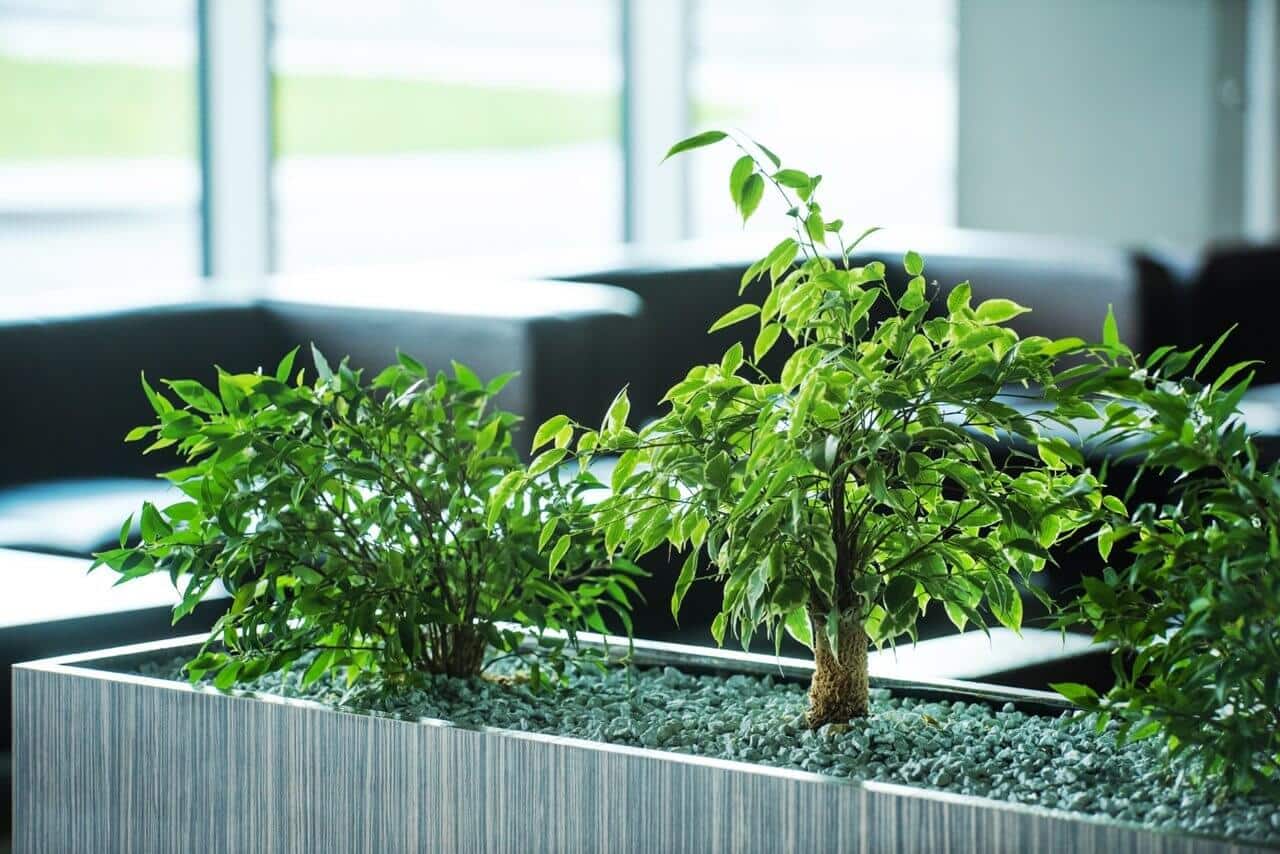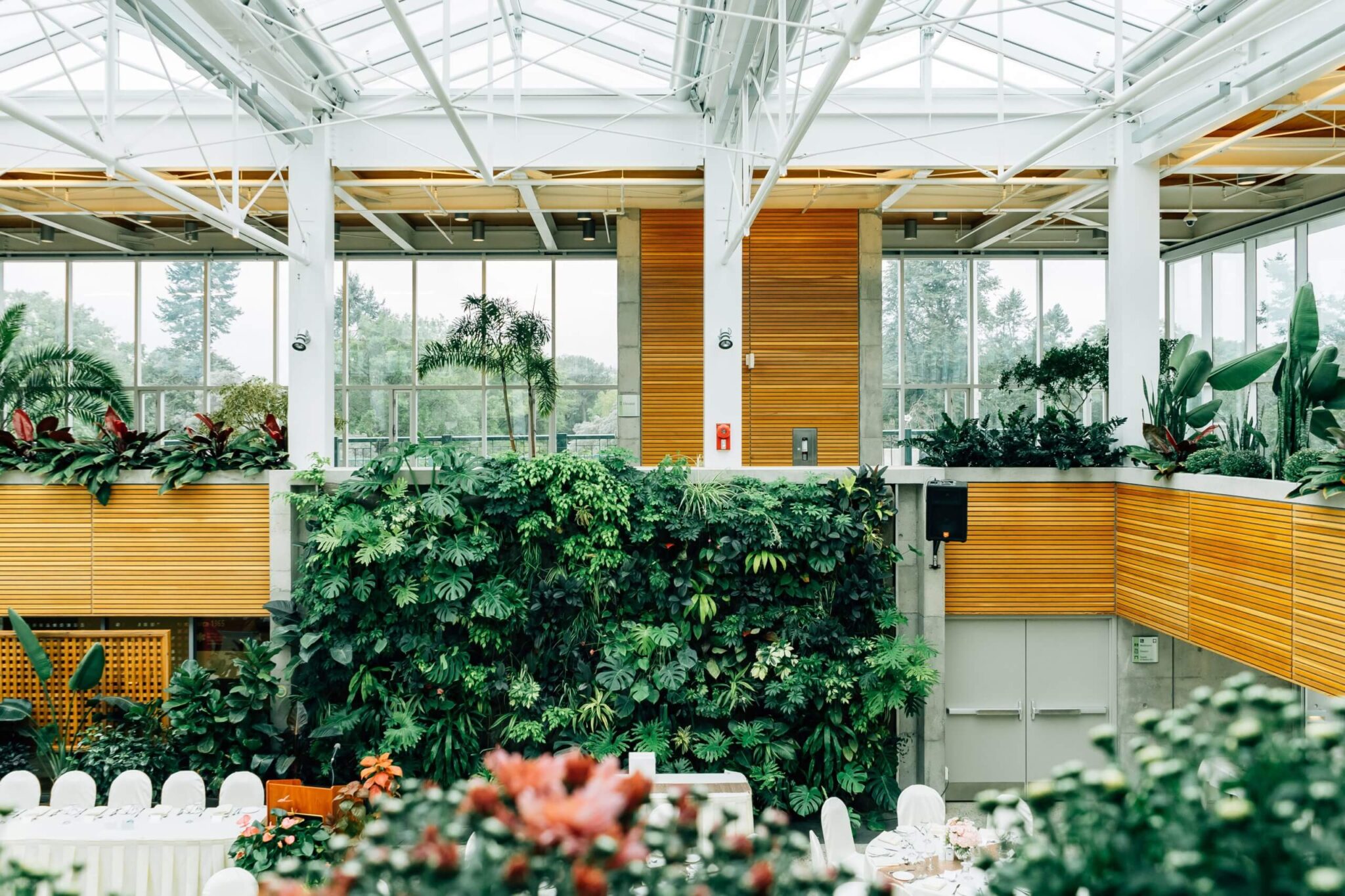Greenery does a world of good
There are many ways to increase productivity using technology, ranging from tablets to space management software. In addition to those items, however, there are more natural means for improving daily life at your company: plants. They’re not just a nice addition to your space; offices that lack plants suffer from poor air quality and their workers miss out on many other benefits, such as increased memory, productivity, and overall happiness. Plants are an easy and economical way to improve your office.
Biophilia may sound like something ominous and toxic, but it’s actually the exact opposite—it’s a person’s innate need to connect with nature. This need is especially important for businesses. When introduced into a work environment, natural elements have been shown to increase productivity, happiness, and health.
In 1984, scholar Roger Ulrich studied how a hospital’s window views affected the recovery times of surgery patients. Half the patients had a view overlooking a brick wall; the other half had a view of a landscape with trees. The second group experienced a shorter recovery time and less pain, needing less medication than their counterparts with no view. Similar results occurred in Ulrich’s later experiments, which showed that exposure to nature of some sort could also help alleviate stress.
Improved work, morale, and the bottom line
According to Ellison Chair in International Floriculture, indoor plants provide many benefits. Plants have a calming effect that lends to better concentration; not only that, they also lead to better achievements, including better memory and retention. If the plant bears flowers, that’s even better, as flowers have been shown to increase happiness.
Take the Gardenia, for example. Its scent is said to have uplifting effects, and the plant itself can last for more than 20 years. The scent of lemon balm can improve your mood; research done at Ohio State University found that those exposed to the plant experienced higher levels of norepinephrine, a chemical in the brain that’s connected to mood and behavior. Mint has a similar effect; it can increase alertness, improve memory, and also suppress appetite. All of this does have to be weighed against potential allergies and the appropriateness of certain plants for specific spaces.
Other studies have shown that exposure to nature can have a great impact on a company’s bottom line. At the Sacramento Municipal Utility District Call Center, for example, a study similar to Ulrich’s hospital survey was conducted. According to Work Design Magazine, all center workers were divided into two groups: those with natural views, and those without. The former worked at a rate 6-7 percent faster than the latter. Not only did nature improve productivity in this scenario; it also turned out to be a profit-maker, with an average of $2,900 in savings for each employee as a result of increased productivity from being near plants.
Given these findings, biophilia is gaining traction in the office design world. After all, what facility manager doesn’t want to help the company improve its productivity? The best part is that this design plan doesn’t have to be prohibitively expensive. Take some of the following tips, for example.
- To make workers feel like they’re in a natural setting, place tall plants near the workers’ area and shorter plants further away; this will simulate a receding landscape
- Instead of arranging plants in a careful and symmetrical order, try placing them at random and use a mixture of different plants for variety and color
- Placing a plant near a window can draw the worker’s eye to the outside, creating a blended effect where both interior and exterior have a biophilic effect
- To create their own natural landscapes right at their desks, workers can decorate their desks with potted plants and pictures of natural scenery

Better air conditions
Plants act as filters that remove toxins from the air. According to research conducted by NASA, houseplants can decrease these toxins by as much as 50-60 percent. Plants don’t just take away the bad things, though. They also put in the good by emitting water vapor in the air. This leads to cooler office temperatures, making the environment more pleasant for workers overall.
The Areca Palm, for example, has long fronds which can trap air particles and make your office environment less polluted. There are also plants that counter the harmful effects of office equipment. Computers and other machines can emit particles that lead to nausea and headaches, but the English Ivy can protect you from these airborne dangers. The golden porthos plant also fights the effects of office equipment, battling the ozone produced by copy and fax machines.
They’re a sustainable choice
You wouldn’t think that sustainability would be an issue when thinking about natural office decorations, but there actually is a hierarchy when it comes to plants and flowers. Natural plants are better than cut flowers. Why? Though cut flowers are lovely to look at, a lot of things that go into their production and transportation can harm the environment. The flowers might be forced to bloom with energy-intensive lighting, preserved using chemicals, and transported across the country.

They cut down noise
Plants act as a natural buffer that can help decrease the noise levels around you. Studies have found that plants result in a reduction of 5 decibels. So in addition to all the benefits listed above, plants can help drown out the volume of your noisy neighbor.
In order for your plants to be effective noise blockers, choose plants with plenty of thick foliage and place them on a shelf near the top of your cubicle.
They’re a nice decoration
Plants are a nice way to liven up your office, outside of the usual artwork and photographs. They also add a natural element to a space that’s surrounded by machines and make your space a little greener. Taking care of a plant may also give you the chance to take a break from work and concentrate on a calming activity for a short period of time, whether you water it or just take it to a window so that it can soak in some light.
If you’re limited in what size plant you can bring to the office, consider a potted cactus or an African violet. The cactus is a classic choice that comes in many varieties, while the African violet will add a colorful splash to your workspace.
Whatever plant you end up choosing, be sure to research its proper care and maintenance. Though caring for a plant may seem relatively straightforward, each plant has different needs, and none of the great benefits discussed above will be of much use if the plant isn’t cared for properly.
You can’t bring an entire garden into your office, but that doesn’t mean you should ignore plants altogether when you’re thinking of ways to improve the workplace. Besides cutting down on sick days, plants can also lead to greater productivity, happier workers, and an overall more visually engaging workplace.
Beyond these simple tips, there are more elaborate ways of greening up the office. If you have the budget for it, you can also consider investing in an ecowall, or a wall filled with plants. Koi ponds, atriums, ceiling windows, and workplace gardens can also be great ways to be more natural while also making your office modern and unique.
The next time you’re thinking about the best way to boost productivity in the office, try running an experiment of your own. Place several plants around the office, the breakroom, and the kitchen area, and see how they affect your coworkers. You may see some pleasant results!
Image credit: stockimages/freedigitalphotos.net




